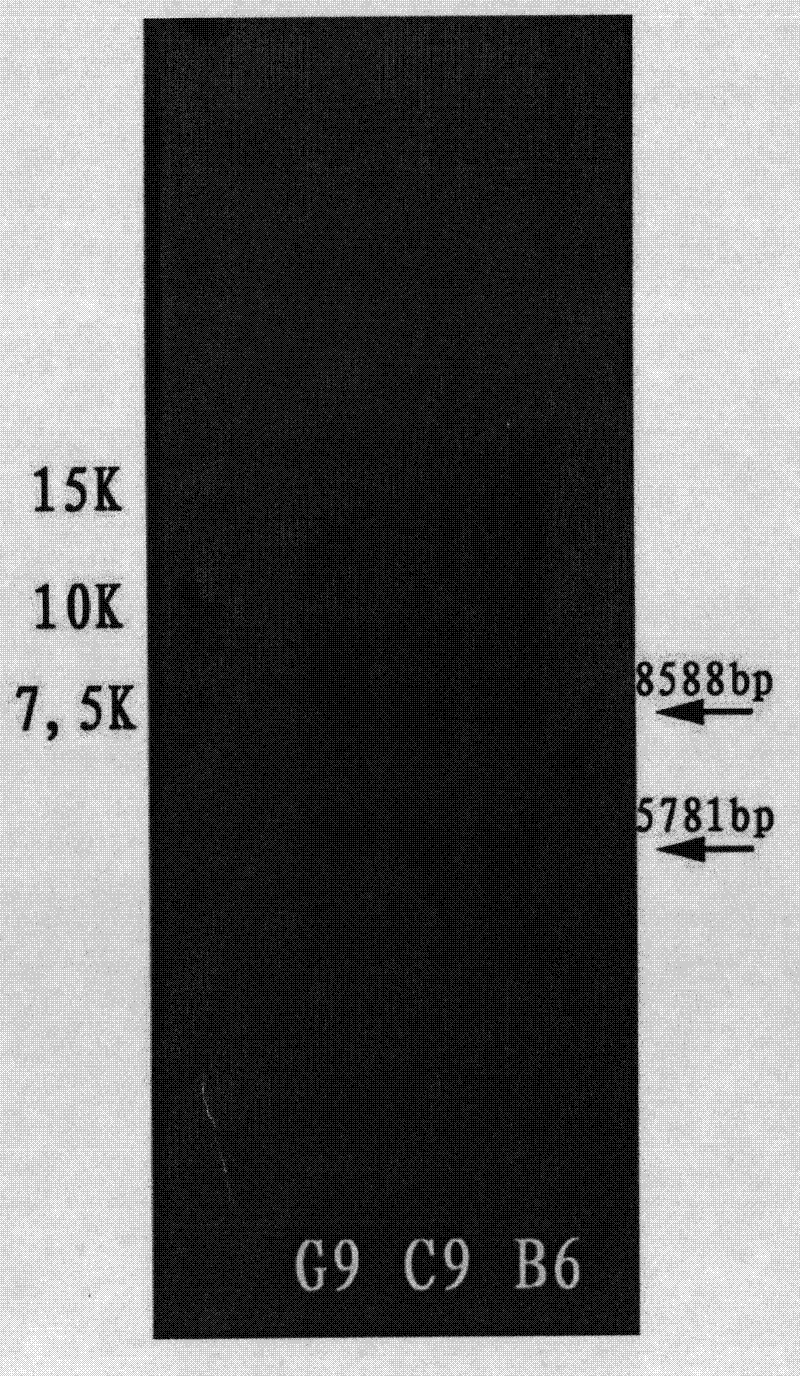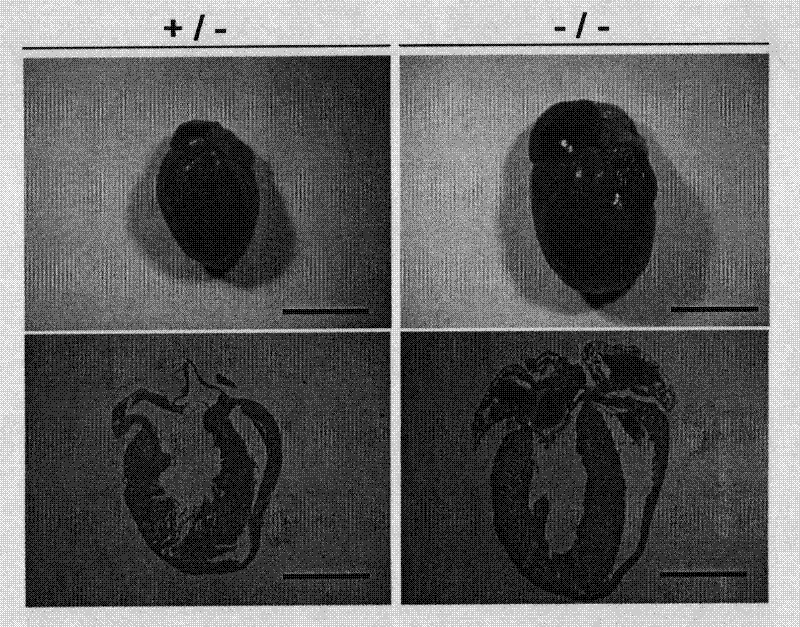Establishment of cytoskeleton binding protein WDR1 gene knockout model and application of model
A technology that binds protein and cytoskeleton, applied in the field of transgenic
- Summary
- Abstract
- Description
- Claims
- Application Information
AI Technical Summary
Problems solved by technology
Method used
Image
Examples
Embodiment 1
[0053] Establishment of knockout model of cytoskeleton-binding protein gene
[0054] 1. By constructing a gene targeting vector, see figure 1 ;
[0055] 2. Transfect embryonic liver cells (ES) with the above-mentioned vectors, and screen homologously recombined ES cell clones by Southern blot hybridization, see figure 2 ;
[0056] 3. Injecting the homologously recombined ES cells obtained in step (2) into blastocysts, implanting them into the uterus of pseudopregnant mice, and obtaining chimeric mice after the offspring are born;
[0057] 4. The chimeric mice were further mated to obtain the knockout mice of cytoskeleton binding protein WDR1.
Embodiment 2
[0059] Phenotypic Analysis of Cytoskeleton Binding Protein Knockout Mice
[0060] The WDR1 gene-deficient mice obtained in Example 1 had no obvious abnormalities at birth, and all died on the 14th day after birth; compared with wild-type control mice, the heart weight / body weight ratio of WDR1 gene knockout mice increased significantly ; Histological section staining analysis results showed that the heart of WDR1 gene knockout mice was significantly larger than that of wild-type control mice, see image 3
PUM
 Login to View More
Login to View More Abstract
Description
Claims
Application Information
 Login to View More
Login to View More - R&D
- Intellectual Property
- Life Sciences
- Materials
- Tech Scout
- Unparalleled Data Quality
- Higher Quality Content
- 60% Fewer Hallucinations
Browse by: Latest US Patents, China's latest patents, Technical Efficacy Thesaurus, Application Domain, Technology Topic, Popular Technical Reports.
© 2025 PatSnap. All rights reserved.Legal|Privacy policy|Modern Slavery Act Transparency Statement|Sitemap|About US| Contact US: help@patsnap.com



